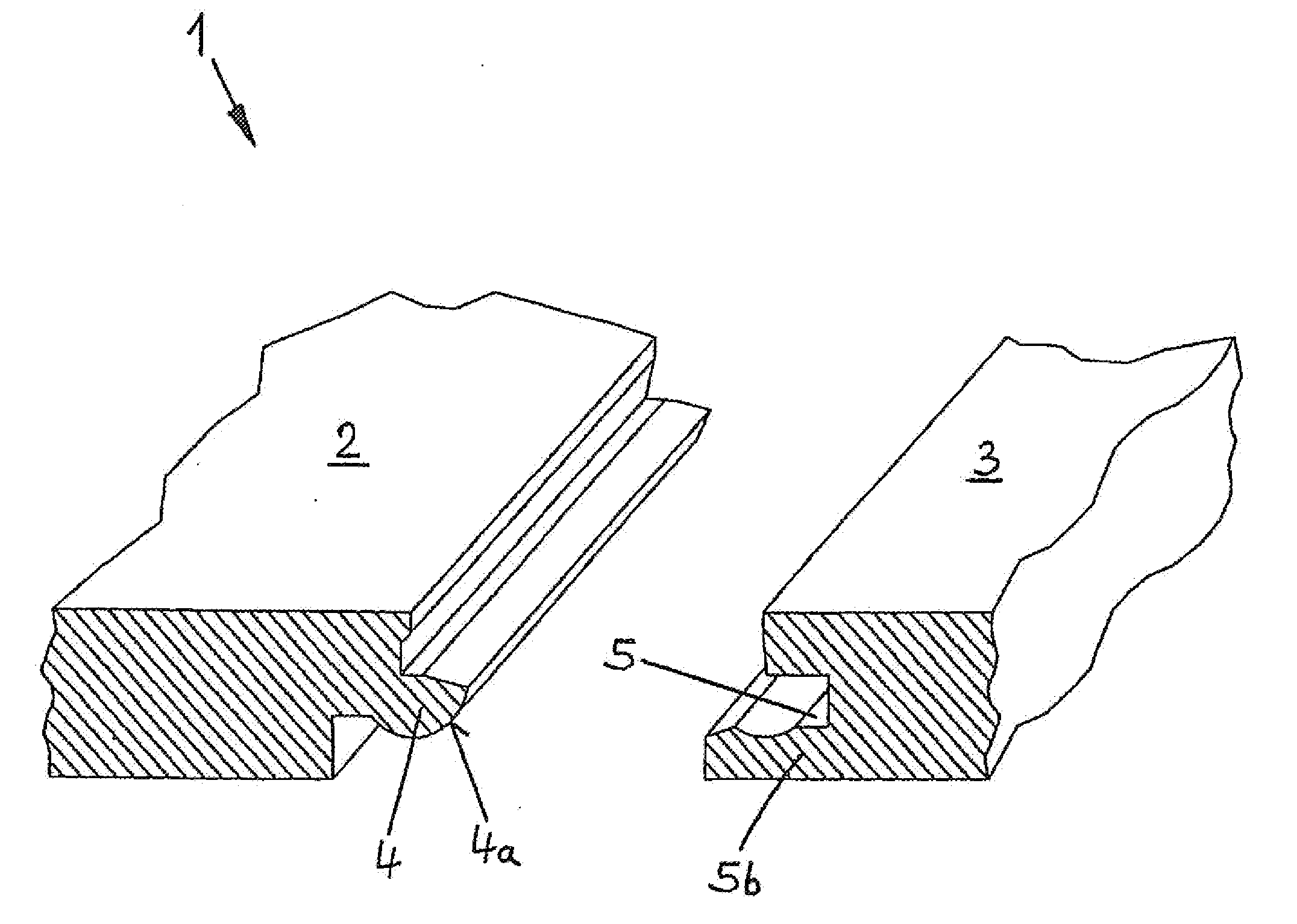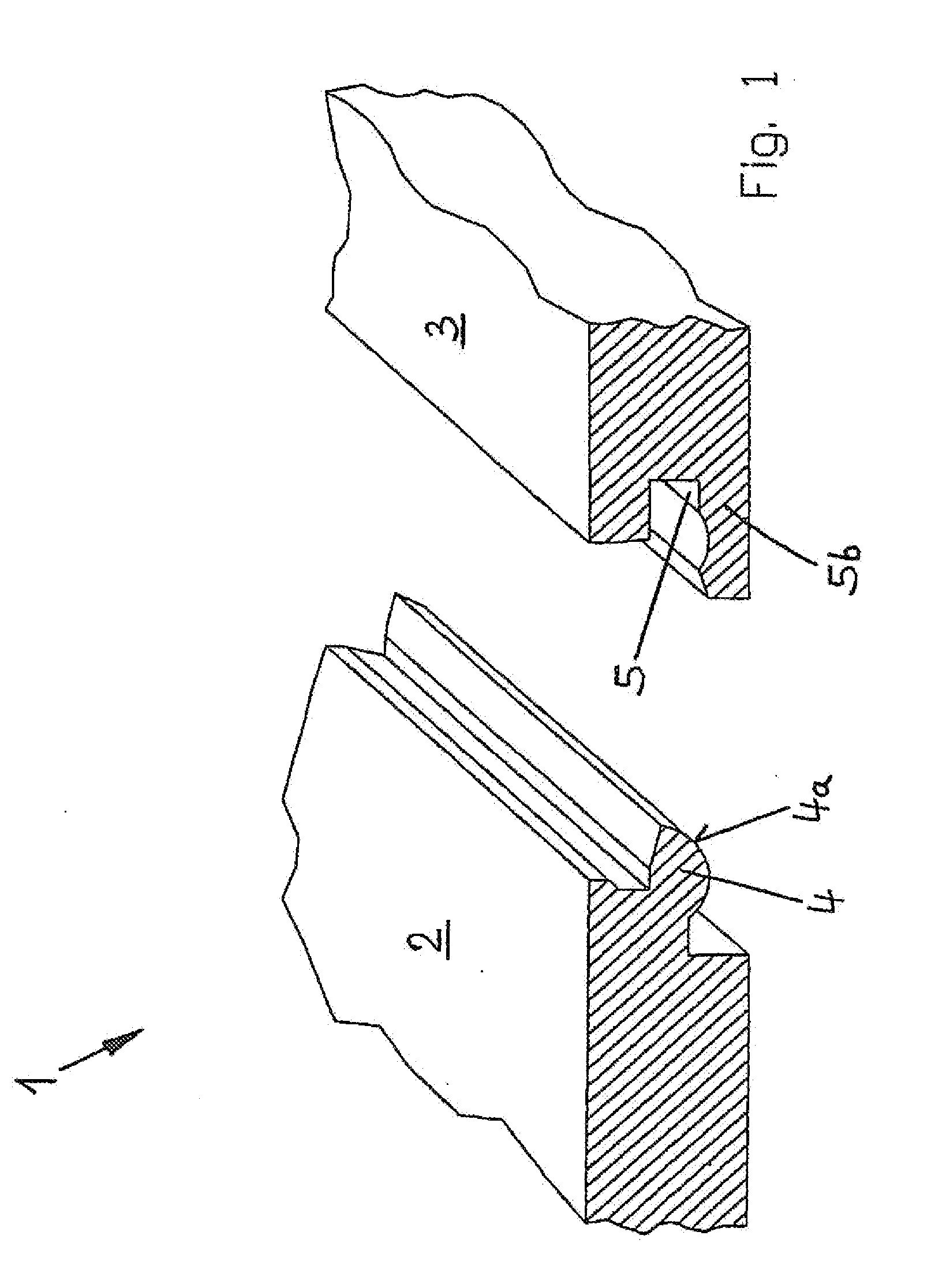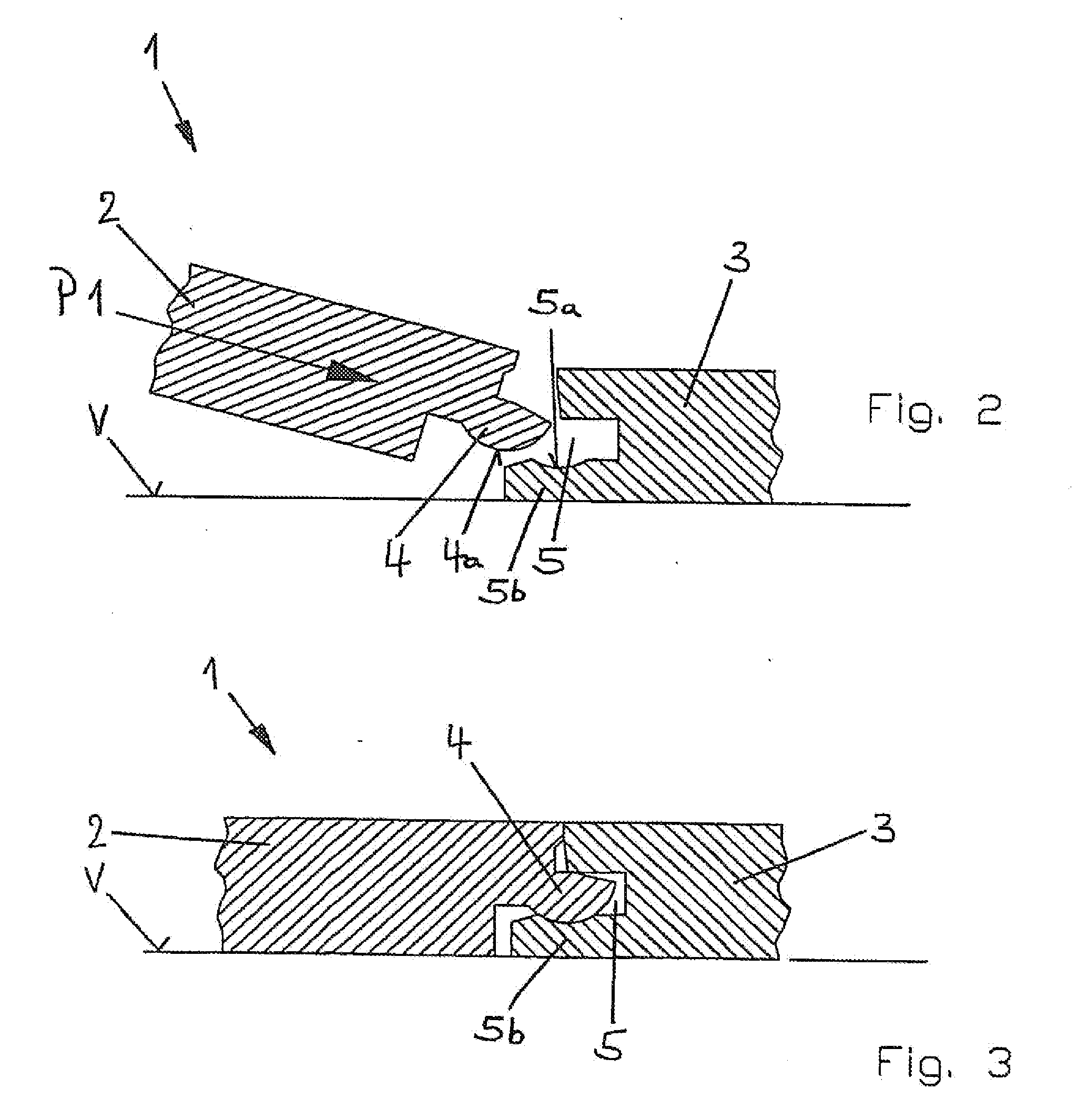Panel and fastening system for such panel
a technology of fastening system and panel, which is applied in the direction of walls, mechanical equipment, transportation and packaging, etc., can solve the problems of not providing satisfactory resistance to the hook elements, the connection of the known fastening system is particularly problematic, and the connection ceases to function, etc., to facilitate not only the insertion of the locking element, the effect of simple components
- Summary
- Abstract
- Description
- Claims
- Application Information
AI Technical Summary
Benefits of technology
Problems solved by technology
Method used
Image
Examples
Embodiment Construction
[0047]FIG. 1 of the drawing shows a perspective view of one type of retaining profile for fastening system 1 according to the invention. The opposite small faces of panels 2 and 3 are provided with corresponding retaining profiles, so that adjacent panels 2 and 3 can be connected to each other. This type of retaining profile is a modified tongue-and-groove joint, where tongue 4 engages an undercut in the lower groove wall of groove 5, so that, in the installed state, the two panels 2 and 3 are protected against being pulled apart in the plane of installed panels 2 and 3 and perpendicular to the direction of the: interlocked small faces.
[0048]FIG. 2 shows the attachment of a new panel 2 at an angle. In this context, tongue 4 of new panel 2 is always engaged with groove 5 of installed panel 3 in the direction of arrow P1, and new panel 2 is subsequently swiveled down onto base surface V until the position illustrated in FIG. 3 is reached. It is easily comprehensible that a curved are...
PUM
 Login to View More
Login to View More Abstract
Description
Claims
Application Information
 Login to View More
Login to View More - R&D
- Intellectual Property
- Life Sciences
- Materials
- Tech Scout
- Unparalleled Data Quality
- Higher Quality Content
- 60% Fewer Hallucinations
Browse by: Latest US Patents, China's latest patents, Technical Efficacy Thesaurus, Application Domain, Technology Topic, Popular Technical Reports.
© 2025 PatSnap. All rights reserved.Legal|Privacy policy|Modern Slavery Act Transparency Statement|Sitemap|About US| Contact US: help@patsnap.com



